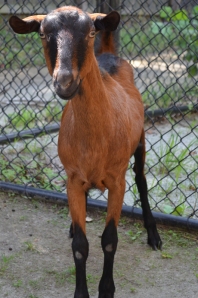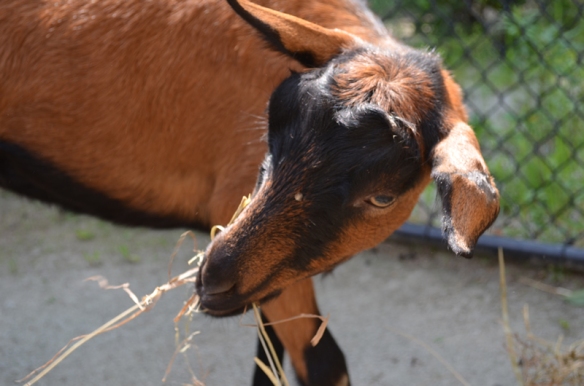Summer is right around the corner and it’s once again time to take a tour around the world – all from within our very own Jeansboro Junction (located in Friendly Farm)! On this tour, you will get the chance to learn about our farm animals and their natural histories, as well as earn a souvenir to take home with you.
While commercial farms tend to focus on a single crop or species of livestock, smaller family farms tend to have many different plants and animals, which is what you will see in our farmyard here at the Greensboro Science Center. When farmers are setting up their farms, they will often think about the relationships between their herds and their gardens. For example, horse manure is a great crop fertilizer and can be used to help grow vegetables for people as well as hay for livestock. Free-range chickens are great for keeping pests out of gardens while also providing eggs to sell or eat.
During the farm planning process, farmers need to be aware of the needs of both their animals and their gardens to ensure an efficient and healthy farm. For our activity this month, you will be planning and creating your own farm diorama! Below, you will see an example of a farm that we created, as well as how to make a horse for your farmyard.
What you will need:a box, craft supplies and a creative mind! Running short on craft supplies? Visit Reconsidered Goods to stock up on donated materials without breaking the bank!
Step 1: Figure out what kinds of animals you want on your farm and what they will need to live happy and healthy lives. To get started, remember that the three essential needs for any living creature are food, water and shelter. If you’re using the internet, search for animal care sheets (ex. Horse Care Sheet) to find out what each animal needs.

Step 2: Make your cork horse! Start by breaking 3 toothpicks in half. Use the pointy ends to add legs and a neck to your horse. You will have half of a toothpick left over.

Step 3: Attach a smaller cork to the neck area of the horse; this will become the head. Use glue to attach string for hair and googly eyes (if you would like) for the finishing details.

Step 4: Create your diorama with the animals you want on your farm! For our farmyard, we decided we wanted to have a garden, free-range chickens with a chicken coop, a fenced-in pasture for sheep and horses, and a well to make providing water easier on our farmer. For an added challenge, try using only recyclable materials or materials from your yard!









